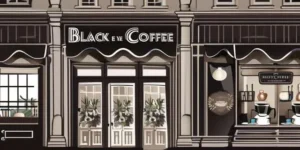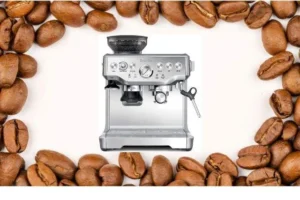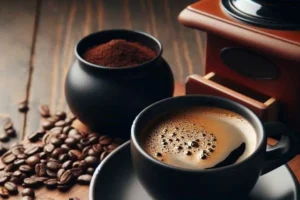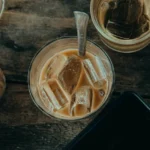Sip, Savor, and Learn: Coffee Brewing Methods Revealed
Coffee brewing methods ranging from drip to immersion to espresso extraction create unique and personalized coffee experiences. Getting to know the various coffee brewing methods allows you to unlock new flavors and dial in your perfect cup. From pour-over and French press to Moka pots and siphon brewers, exploring different beans, grinds, temperatures, and techniques opens up a world of coffee-tasting possibilities.
Coffee Brewing Methods Key Takeaways
- Coffee Brewing Basics: Understand the essential elements of coffee brewing, including coffee bean types, grind size, and water quality, which shape your coffee’s flavor.
- Brewing Methods: Explore three main brewing types – Drip, Immersion, and Espresso – each delivering unique flavor profiles.
- Adjusting Brew Variables: Learn how to fix common brewing errors by tweaking parameters like grind size and water temperature to match your taste.
- Global Coffee Cultures: Coffee has diverse cultural roots, from Italian espresso bars to Swedish fika, offering social and historical richness to your coffee experience.
The Basics of Coffee Brewing

Before jumping into different coff brew methods, let’s do a topical overview of the core concepts that form the foundation for great coffee brewing. This includes factors like the coffee beans, grind size, and water quality.
The Coffee Bean
Coffee originates from the roasted seeds of the coffee plant’s cherries. The two main commercial coffee species are Arabica and Robusta. Arabica is considered higher quality while Robusta has a harsher, stronger taste but contains more caffeine. The growing region, altitude, soil composition, processing method, and more all impact the flavors of the beans.
The Importance of Grind Size
The size that the beans are ground to is critical for proper flavor extraction. Generally, a finer powdery grind results in over-extraction and bitterness. Meanwhile, too coarse of a gritty grind causes under-extraction and weak coffee. The key is to find the ideal grind size tailored to your specific brew method.
Role of Water Quality
Many people don’t realize that the quality of the water used is crucial for coffee extraction and flavor. Good brewing water has a neutral pH, moderate mineral content for extraction, and no off odors, tastes, or chlorine. Using charcoal filtration or spring water can elevate your brew.
Coffee Brewing Methods by Type
Now let’s thoroughly explore some of the most popular coffee brewing methods along with their key characteristics.

Drip Coffee Brewing Methods
Drip brewing involves pouring hot water over coffee grounds and allowing the liquid to filter down into a receiving carafe or pot. This is one of the most common ways to brew coffee at home.
Auto-Drip Coffee Makers
Auto-drip machines handle heating the water and dripping it over the grounds automatically with the flip of a switch. This offers convenience, but less control over brewing variables compared to manual methods. They range from budget models under $50 to high-end machines with features like bloom simulation.
Manual Drip Brewing
Manual drip methods like pour-over, which involve pouring heated water by hand over the grounds in a cone, allow you to better control variables like pour rate, technique, and temperature. This nuanced process extracts flavors more precisely than auto-drip but requires more effort. Popular manual devices are the V60, Kalita Wave, Bee House dripper, and more.
Cold Brew Drip
Cold brew drip towers contain the coffee grounds in a filter basket at the top while room temperature or cold water slowly drips through them over 12-24 hours. The extended contact time results in a smooth, naturally sweet coffee concentrate. Diluting with water or milk gives you a cold brew. The low-temperature steeping avoids bitterness and high acidity.
Immersion Coffee Brewing Methods
With immersion brewing, the coffee grounds are completely submerged and soaked in hot water before separating the liquid coffee. This gives the grounds more contact time.

French Press
The French press is a simple but effective manual immersion method. Coarsely ground coffee is steeped in the press then a built-in metal filter screen plunges down through the brew to separate the grounds from the liquid. Since no paper filter is used, the coffee leaves behind some sediment and oils for a thicker, richer mouthfeel. The full immersion extracts a robust, intense flavor.
AeroPress
The AeroPress is a popular portable plastic manual device that combines immersion and pressure. Coffee is steeped with hot water then the plunger is pressed down, forcing the liquid through a paper filter into the receiving mug or carafe in about 10-30 seconds. This produces a clean filtered taste with clarity similar to pour-over. The rapid pressurized filtering highlights subtleties.
Siphon Brewing
Also known as vacuum brewing, the siphon method uses vapor pressure and vacuum between two chambers to cycle the water between the upper and lower chambers containing the grounds. This produces an extremely clean filtered taste due to the unique immersion then filtering action. It’s a scientific visual spectacle.
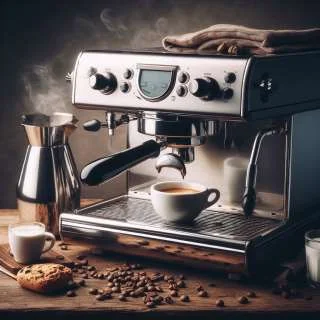
Espresso Brewing Methods
Espresso is a strong, concentrated coffee brew made by forcing very hot water under high pressure through finely-ground coffee beans. The pressure extracts more solubles in a short time.
Espresso Machines
Dedicated espresso machines use at least 9 bars of pressure to extract the coffee. Machines range from steam-pressure consumer models for under $100 to commercial-grade motorized machines costing thousands. Proper grinding and dosing are critical to pull good shots.
Moka Pot Brewing
A stovetop Moka pot uses steam pressure from heated water to push water up through a funnel of coffee grounds into the top collecting chamber. This produces a strong concentrated “mock espresso” similar to espresso but without the 9+ bars of formal pressure. Still creates decent crema though!
Lever Espresso Machines
With manual lever control of pressure and finely tunable shot parameters, lever espresso allows baristas to masterfully pull the highest quality shots. But these beautiful machines are complex and expensive. Lever machines are the choice of expert home baristas.
Alternative Coffee Brewing Methods
Beyond the main categories, these specialty brewing methods create unique flavor profiles you can’t achieve otherwise.
Pour Over
With pour-over brewing like the V60 or Kalita, the pouring technique is crucial for even saturation and extraction. The paper filters make for an exceptionally clean, nuanced-tasting cup highlighting terroir. It’s a manual, artisanal approach for black coffee connoisseurs.
Turkish Coffee
Using an ultra-fine powder grind and boiling in a small pot called a cezve creates strong, thick, syrupy unfiltered Turkish coffee. Can be served plain or with sugar. The ultra-fine grind results in “mud” at the bottom.
Chemex Brewing
The Chemex uses an extra thick paper filter that removes sediment and oils even more effectively than standard pour-over. This produces an incredibly clear, clean, light-bodied cup. The lack of certain coffee compounds allows subtle flavors to shine.
Vietnamese Drip
This unique drip filter has tiny holes at the bottom and drips right into a small cup or phin. The steel filter allows oils and small grounds through for a powerful almost syrupy coffee. Often served with sweetened condensed milk to counter the robustness.
| Method | Basic Process | Characteristics |
| Auto-drip | Automatic hot water drip | Convenient, consistent |
| Manual drip | Hand pour water over grounds | Nuanced flavor with practice |
| Cold brew | Steep grounds in cold water | Sweet, smooth, low acidity |
| French press | Steep then press through a metal filter | Rich, oils, sediment |
| Aeropress | Press water through grounds | Clean, nuanced flavor |
| Siphon | Vacuum cycling between chambers | Complex, filtered flavor |
| Espresso machine | High-pressure extraction | Concentrated, intense |
| Moka pot | Steam forces water through grounds | Strong, crema, robust |
| Lever espresso | Manual lever controls pressure | Expert shots |
| Pour-over | Careful pouring technique | Clean, nuanced, highlights terroir |
| Turkish | Fine grind boiled and served | Intense, thick, unfiltered |
| Chemex | Thick paper filter | Light, crystal clear flavor |
| Vietnamese drip | Steel filter | Strong, oily, syrupy |
Choosing Your Coffee Beans
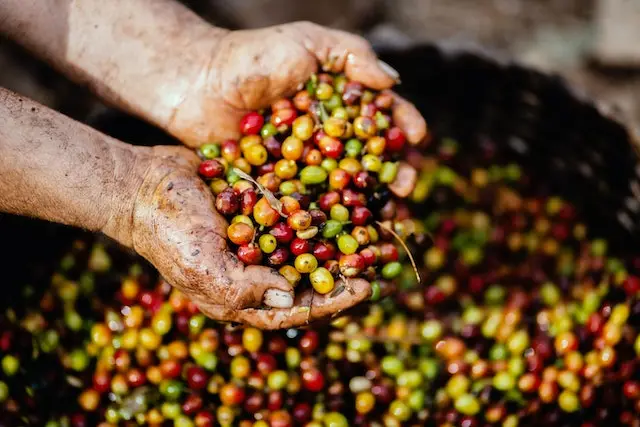
The specific coffee bean variety used makes a big impact on flavor. Here are some factors to consider when selecting beans for brewing.
Single-Origin vs. Blends
Single-origin beans come from just one particular farm, crop, and region, which expresses those unique terroir characteristics. Blends combine beans from multiple regions, often for more complex flavors. Both have their merits depending on preference.
Roast Level
How long the green beans are roasted affects their flavors and aromas. Light roasts retain more bright, acidic, and fruity notes. Medium roasts strike a balance between origin character and roasted flavor. Dark roasts develop more bitterness, and burnt flavors and lose most origin character.
Freshness
Freshly roasted whole bean coffee starts progressively losing its aromatic compounds and nuanced flavors soon after roasting. Buy only what you’ll consume within 10-14 days and store in an airtight container away from air, light, and moisture.
Water Temperature
Brewing with water that’s too hot or too cold can ruin your cup of coffee. Here’s what you need to know about the impact of water temperature.
Ideal Temperature Range
For drip, pour-over, and immersion brewing methods, the ideal water temperature range is around 195-205°F. Espresso is prepared with even hotter water at around 200-212°F to extract properly at high pressure.
Effect on Flavor
Too low of a water temperature leads to under-extracted coffee lacking sweetness, body, and aromatics. Water that is too hot over-extracts bitter, harsh, astringent compounds. Hitting the right temperature range results in balanced extraction.
Coffee Grinding Technique
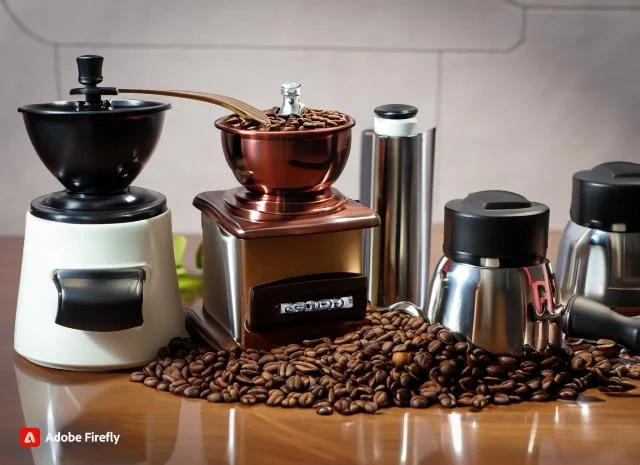
A consistent, properly sized coffee grind is essential for optimized extraction and great flavor. Let’s go over grinders, grind settings, and how to dial in the right grind.
Burr vs. Blade Coffee Grinders
There are two main types of coffee grinders – blade and burr grinders. Blade grinders unevenly chop and smash beans. Burr grinders uniformly crush the beans between two abrasive revolving surfaces for optimal grind consistency. Burr grinders, especially stepless ones, produce much better grind quality and are preferred by coffee experts for brewing and espresso.
How Fine or Coarse?
Ideally, you want an evenly sized grind that extracts the best qualities from the beans without overextracting. Unfortunately finding the right grind size and grinder settings takes a lot of trial and error dialing in. Generally, finer grinds are needed for espresso and drip methods. Coarser grinds work better for French press and cold brew.
Measuring Coffee and Water
Nailing the right ratio of coffee to water is crucial for proper extraction and robust flavor when brewing.
Ideal Coffee-to-Water Ratio
The Specialty Coffee Association recommends using 55 grams of coffee per 1 liter of water as a baseline ratio. Converted, that’s 1:18 ratio of coffee to water. However, the ideal ratio ultimately varies by individual tastebuds and brewing methods.
Weighing vs. Measuring by Volume
Using an accurate digital kitchen scale to weigh out coffee and water portions is much more precise and consistent than measuring by scoops or cups, which compress and vary. Weighing leads to better consistency brew after brew.
The Brewing Process
Now that we’ve covered parameters and gear, let’s walk through the actual brewing process from start to finish.
Brew Time
Depending on the brew method, the ideal total brew time usually ranges anywhere from 2 to 8 minutes. The contact time affects extraction so dialing in the right duration is key. Use shorter times for light roasted coffee and longer brew times to help smooth out dark roasts.
Extraction Methods
The main ways of extracting soluble coffee compounds are infusion (immersion), percolation (drip), and applying pressure as with espresso. Each makes for a very different end beverage.
Proper Brewing Technique
From pour rate and pattern for pour-over, to plunge technique for French press, to tamping for espresso, developing the right hands-on brewing techniques for your equipment enhances flavor consistency.
The Role of Filters
Filtering coffee removes insoluble particulates, oils, and sediment while also impacting mouthfeel and flavor clarity.
Types of Coffee Filters
The main filter options are metal screens, cloth filters, paper filters, and mesh presses. Bleached paper filters allow flavorful acids and aromatics to pass through while trapping oils and solids.
To Filter or Not To Filter?
Non-filtered methods like the French press leave in coffee oils and fine sediment which lend a thicker, fuller mouthfeel and bolder flavor. But paper filtration creates a cleaner, crisper, lighter-tasting cup, highlighting subtle characteristics.
Brewing Variables & Troubleshooting
Let’s overview some common coffee brewing problems and how to tweak parameters to achieve better extraction.
Common Brewing Mistakes
Under-extracted coffee (weak, sour) often stems from too coarse a grind, low water temperature, or too little coffee. Bitter over-extracted brews can result from too fine a grind or too high a temperature.
Tailoring Taste Through Adjustments
We all have different taste preferences. Reduce bitterness by using lower-temperature water. Increase strength with a finer grind. The joy of brewing is customizing to your perfect taste.
Coffee Brewing Accessories
Having the right tools to control brewing variables takes your home brewing game to the next level.
Gooseneck Kettle
Gooseneck kettles with their elegant swan-like curved spouts are specially designed to control the pour, allowing for a slow, steady stream crucial for even water distribution when doing pour-over brewing. The precision spout makes it much easier to nail good technique.
Digital Brewing Thermometer
It’s critical to brew coffee with water heated to the ideal temperature, but nearly impossible to gauge temp accurately by hand. A digital thermometer with a probe takes the guesswork out, giving you the exact water temp before pouring or steeping to help maximize extraction.
Brewing Scales
Highly precise digital kitchen scales designed for coffee take the measuring process to the next level. By weighing coffee doses and water portions, you gain much more control and consistency versus measuring by volume. They can calculate ratios and times too.
Coffee Tasting Spoons
These specially designed, flattened spoons are meant to distribute coffee evenly over the tongue, allowing you to properly discern the flavors, aromas, body, and nuances present in the coffee. Useful for cuppings.

Coffee Culture Around the World
Coffee has become integrated into cultures worldwide, where it often plays an important social role. Let’s explore coffee history and culture.
Coffee Origins and Traditions
Coffee traces back to Ethiopia and Yemen before spreading globally by the 1600s. Distinct regional coffee cultures emerged like Italian espresso bars, Viennese cafes, and Turkish coffee houses which became social hubs. The third wave spotlighted specialty coffee.
Coffee Cultures Around the World
Farming, cultivation and consumption habits have influenced many distinct cultural traditions and connections globally over the centuries:
- Italian coffee culture: Strong espresso drinks like cappuccinos and lattes are integral to Italian culture. Espresso bars serve as gathering spots.
- Viennese coffee culture: Elegant Viennese-style coffeehouses like Café Sacher have been intellectual community hubs for centuries.
- Ethiopian coffee ceremony: Ethiopian coffee ceremonies are elaborate multi-hour traditions for brewing and enjoying coffee with friends and family.
- Turkish coffee culture: Thick, muddy Turkish coffee is served in small cups at all times of day in Turkey and nearby countries accompanying conversation.
- Colombian coffee traditions: Colombian coffee is intertwined with everyday culture. Juan Valdez promotes Colombian coffee farming pride.
- Brazilian coffee preference: Brazilians enjoy bold, strong coffee. Café com leite blended with hot milk is popular for breakfast.
- Scandinavian coffee culture: The Swedish fika tradition revolves around taking a coffee break with friends or co-workers, often with baked goods.
- American coffee shop culture: America has a robust artisanal coffee shop culture focused on sourcing beans and community.
Coffee Community Gathering Places
Beyond just the drink, coffeehouses through history served as communitymeeting spots to share ideas, and news, and enjoy each other’s company. This social role continues today with the rise of local artisanal coffee shops creating spaces for connection.
Final Thoughts on Coffee Brewing Methods
We’ve just scratched the surface of the diverse world of coffee brewing. Mastering variables like the grind, temperature, time, and technique is a lifelong craft, but will let you brew cafe-quality coffee at home. Experiment with different methods, continually refine your process, and mindfully savor each sip. The journey towards that perfect cup never ends. So get brewing and have fun with it!
Coffee Brewing Methods FAQs
The three main categories of coffee brewing methods are drip brewing, immersion brewing, and espresso brewing. Drip methods involve hot water passing over the grounds, immersion entails steeping the grounds in water, and espresso uses pressure to extract a concentrated shot.
Grind size is crucial for proper extraction and flavor. Too fine of a grind overextracts leading to bitterness while too coarse under-extracts causing weak coffee. The right sized grind for the brew method helps optimize extraction.
The ideal water temperature range for coffee extraction is 195°F to 205°F. Water that is too cold under-extracts while water that is too hot causes over-extraction. Proper temperature is key for a balanced flavor.
Filters remove oils and sediment for a cleaner cup while metal screens or mesh presses allow some through for fuller body. Non-filtered coffee like French press is thicker. Paper filters make a lighter, crisper brew.
Coffee has distinct cultural connections worldwide, from Italian espresso culture to Swedish fika coffee breaks to Ethiopian coffee ceremonies. Coffeehouses have long served as community gathering places.


